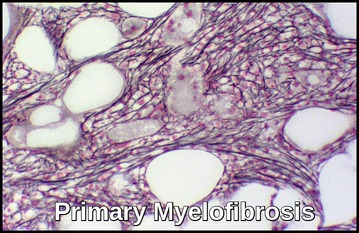Primary Myelofibrosis

Primary Myelofibrosis (PMF) is a chronic myeloproliferative neoplasm characterized by bone marrow fibrosis, splenomegaly, and anemia with nucleated and teardrop-shaped RBCs. The spleen is often very large. Marked enlargement of the spleen and liver may result in infarction, portal hypertension, hypersplenism, plasma volume expansion, and splanchnic vein thrombosis. Myelofibrosis may be primary or secondary to several hematologic, malignant, and non-malignant […]
Read more


